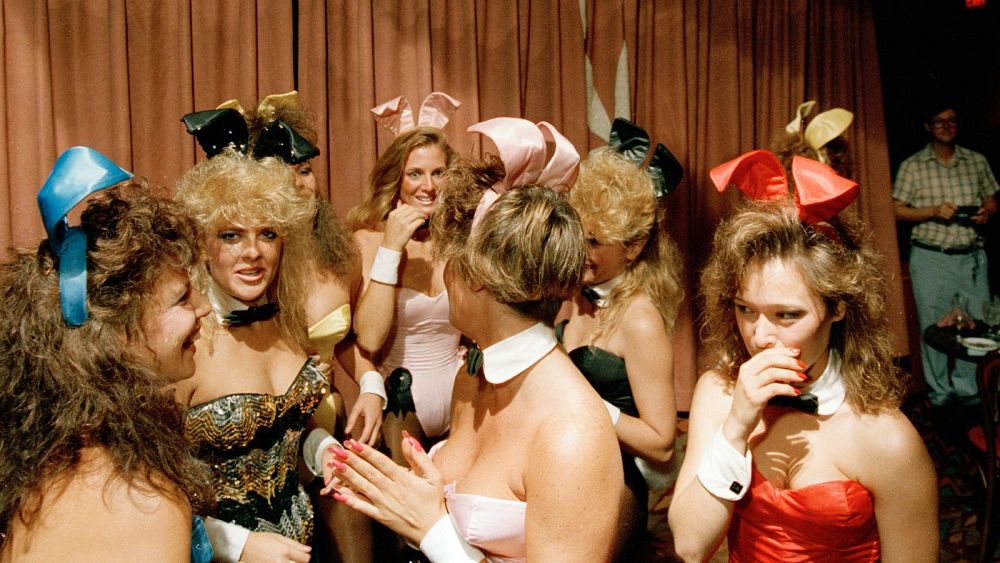
On this day in 1988, the last Playboy Club closed in Lansing, Michigan, bringing to an end nearly 30 years of the iconic nightspot.
The late night venue in Lansing, the state capital of Michigan, had outlived other Playboy Clubs in New York, Los Angeles and Miami which all folded in the mid-1980s.
At the time, media reports said the club’s closing left a vacancy in the Hilton hotel it had called home. The Chicago Tribune wrote the Hilton was seeking “something fresher and less sexist” for the space.
While gentleman’s clubs, especially the Playboy model, have long been synonymous with sleaze, Hugh Hefner’s venues were initially seen as exclusive.
The first Playboy Club opened in Chicago in 1960.
Members and their guests were served food and drinks by Playboy Bunnies who were dressed in tight-fitting bodysuits topped off with rabbit-like ears and tails.
During the last three months of 1961, over 132,000 people paid a visit to the Chicago club, rendering it the busiest nightclub in the world.
A rabbit-headed metal Playboy key – switched for a metal key-card by 1966 – was required for admission.
Playboy Club membership soon became a status symbol and many keyholders didn’t even make use of them. Only 21% of all key holders ever went to a club.
Throughout the worldwide venues’ existence, the clubs went hand-in-hand with popular culture, featuring in episodes of Charlie’s Angels and in 1971’s Diamonds Are Forever.
In the James Bond film, the eponymous character was revealed to be a member of the club.
The club’s popularity took off almost instantly, with numerous new locations opening across the United States. Hefner’s bunnies soon went international, with sites popping up from Jamaica to Osaka.
In 1965, the first of Playboy’s British casinos was opened, following legalisation of gambling in the UK. By 1981, the casino at 45 Park Lane was the most profitable casino in the world.
Lansing’s own Playboy Club opened a year later, continuing with the tradition of the key cards.
It was a traditional Hefner venue in every sense. As well as the now iconic costumes and bunny logo, the women employed had to weigh themselves in front of bosses and were punished if their weight had fluctuated.
By 1987, Lansing was one of the few remaining clubs not pushed out by larger nightspots and was forced to drop the key cards, taking any business it could drum up.
The women who worked there said the club had grown passé, along with the Playboy brand, turning from glamorous to sleazy.
Hugh Hefner’s Playboy magazine had gone into decline by then too.
In 1975, average circulation of the publication was 5.6 million and by 2017 – the year the Playboy founder died – that figure was just 400,000.
In 2018, a new iteration of the Playboy Club was opened in New York City to immense criticism. Questions were raised over the wisdom of opening such a space in the #MeToo era. Just over a year after its opening, the venue was shut down.
While the Playboy brand certainly didn’t die with Hefner, its popularity is certainly diminished. As of 2020, the print edition of the magazine was canned and, today, remains online only.